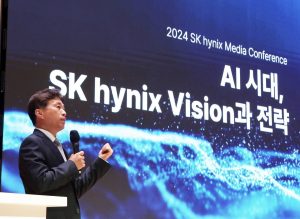Popular Keywords
- About Us
-
Research Report
Research Directory
Semiconductors
LED
Consumer Electronics
Emerging Technologies
- Selected Topics
- Membership
- Price Trends
- Press Center
- News
- Events
- Contact Us
DRAM
News

[News] Where is the “Spring” of the Memory Market?
As 2025 begins, among the three major end-application markets for memory, the recovery momentum for mobile phones and laptops remains weak. Meanwhile, servers, driven by the strong demand for AI continue to grow steadily, which is expected to further drive semiconductor development. AI presents n...
Insights

[Insights] Memory Spot Price Update: DDR4 Prices Continue to Slide Due to CXMT’s Abundant Supply
According to TrendForce's latest memory spot price trend report, regarding DRAM, consumer demand remains weak post-Lunar New Year, with DDR4 spot prices falling due to the abundant supply from CXMT. As for NAND flash, transactions were lethargic, while efficacy of production cuts by suppliers has ye...
News

[News] Decoding CXMT: DDR5 Breakthroughs and What’s Next
As Chinese memory powerhouse CXMT reportedly began mass-producing DDR5 chips in late 2024, a wave of intrigue has surrounded its technological advancements. Despite the tightening grip of U.S. chip controls, the company seems to be breaking through to more cutting-edge processes, leaving the industr...
News

[News] SK Hynix Sets 2024 Record, Surpasses Samsung in Q4 Profit for the First Time
SK hynix announced today that it recorded best-ever yearly performance with 66.1930 trillion won in revenues, 23.5 trillion won in operating profit with an operating margin of 35%, and 19.8 trillion won in net profit with a net margin of 30%. SK hynix’s yearly revenues marked all-time high, exc...
Insights

[Insights] Memory Spot Price Update: Production Cuts Fail to Boost Market as Sellers Struggle with Weak Demand
According to TrendForce's latest memory spot price trend report, regarding DRAM, the spot market has shown a marginal demand increase this week, but transaction prices remain relatively low as buyers are testing the water with low-price inquiries. As for NAND flash, announcements on production cuts ...
- Page 2
- 67 page(s)
- 334 result(s)





